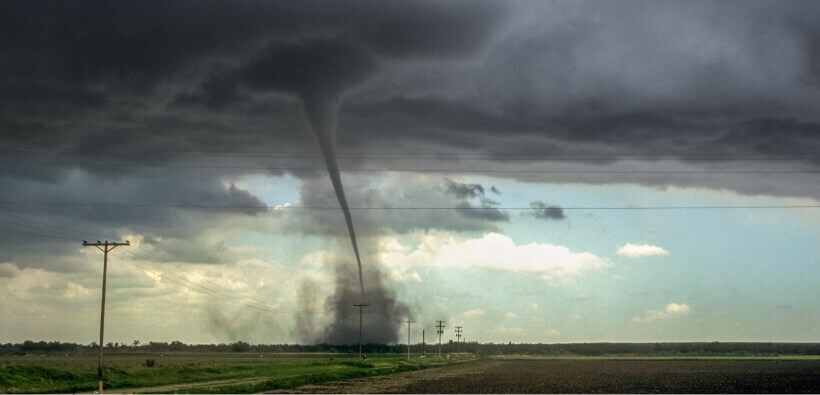The 50-State Guide to Tornado Preparedness and Storm Safety

It used to be that tornadoes were typically associated with Midwestern states like Kansas and Missouri just as earthquakes were thought to only occur in California. But, that doesn’t seem to be true anymore – in either case.
In fact, not only are earthquakes happening in unexpected places across the country, tornadoes have struck all 50 states in the U.S. And, with so many peculiar weather patterns passing through in recent years; no one can be 100 percent sure where they’ll strike next – only that they will.
Devastating Nature of Tornadoes
Because of their devastating nature, tornadoes or twisters can crush a small town into oblivion in a matter of seconds, leaving scores of people hurt or homeless. While homeowners insurance companies do their best to help out from an insurance perspective, the emotional scars left behind are more difficult to heal.
Earlier this year, safety officials and disaster response experts gathered at the National Tornado Summit in Oklahoma City to discuss a variety of concerns. Among those addressed were breakthroughs in storm-safe homes, disaster preparedness, and emergency management.
No Stopping Mother Nature
Though you may not be able to stop Mother Nature from doing what she wants to do, when she wants to do it, you can learn more about tornadoes and how to prepare for them.
Here is some information about tornadoes to start:
- Tornadoes are meteorological phenomena of violently rotating columns of unstable air that extend from a thunderstorm or supercell to come into contact with the ground, generally causing massive damage.
- Tornado intensity is measured by the enhanced Fujita (EF) scale, which rates them on a scale of F0 through F5, based on the amount and type of wind damage, with an F5 causing the most destruction. The categories and wind speeds are as follows:
- F0 have wind speeds between 40-72 mph
- F1 have wind speeds between 73-112 mph
- F2 have wind speeds between 113-157 mph
- F3 have wind speeds between 158–206 mph
- F4 have wind speeds between 207-260 mph
- F5 have wind speeds between 261–318 mph
With an F5, residents can expect total devastation. Few if any structures will remain standing and cars will become missiles flying through the air. Anyone not taking cover in a basement or other protected area runs the risk of being severely injured or killed.
- Tornadoes strike quickly. Preparedness is the key to survival – from knowing where the nearest emergency shelter is to collecting supplies you and your family will need in the event of an emergency.
Building Your Own Emergency Supply Kit
Below are some of the basic items you may want to include in your emergency supply kit:
- Water – at least one gallon per person per day for a minimum of three days
- Food – enough non-perishable food for at least three days
- Battery-powered radio and a NOAA Weather Radio to monitor the storm’s progress with tone alert and extra batteries for both
- Flashlight and plenty of extra batteries
- Well-stocked first aid kit
- Whistle to signal your location or for help, if needed
- Dust mask to help filter possibly contaminated air and plastic sheeting and duct tape to be used as needed for shelter
- Wrench or pliers to turn off utilities
- Manual can opener for your food and pet food
- Cell phone with chargers – preferably solar and car, if power is not available for several days.
Remember – you can never be overly-prepared for a natural disaster. Be sure to review your homeowners insurance policy ahead of time and store a copy in a safe place so you can get to it should your home be damaged or destroyed. Stay alert and stay safe.


